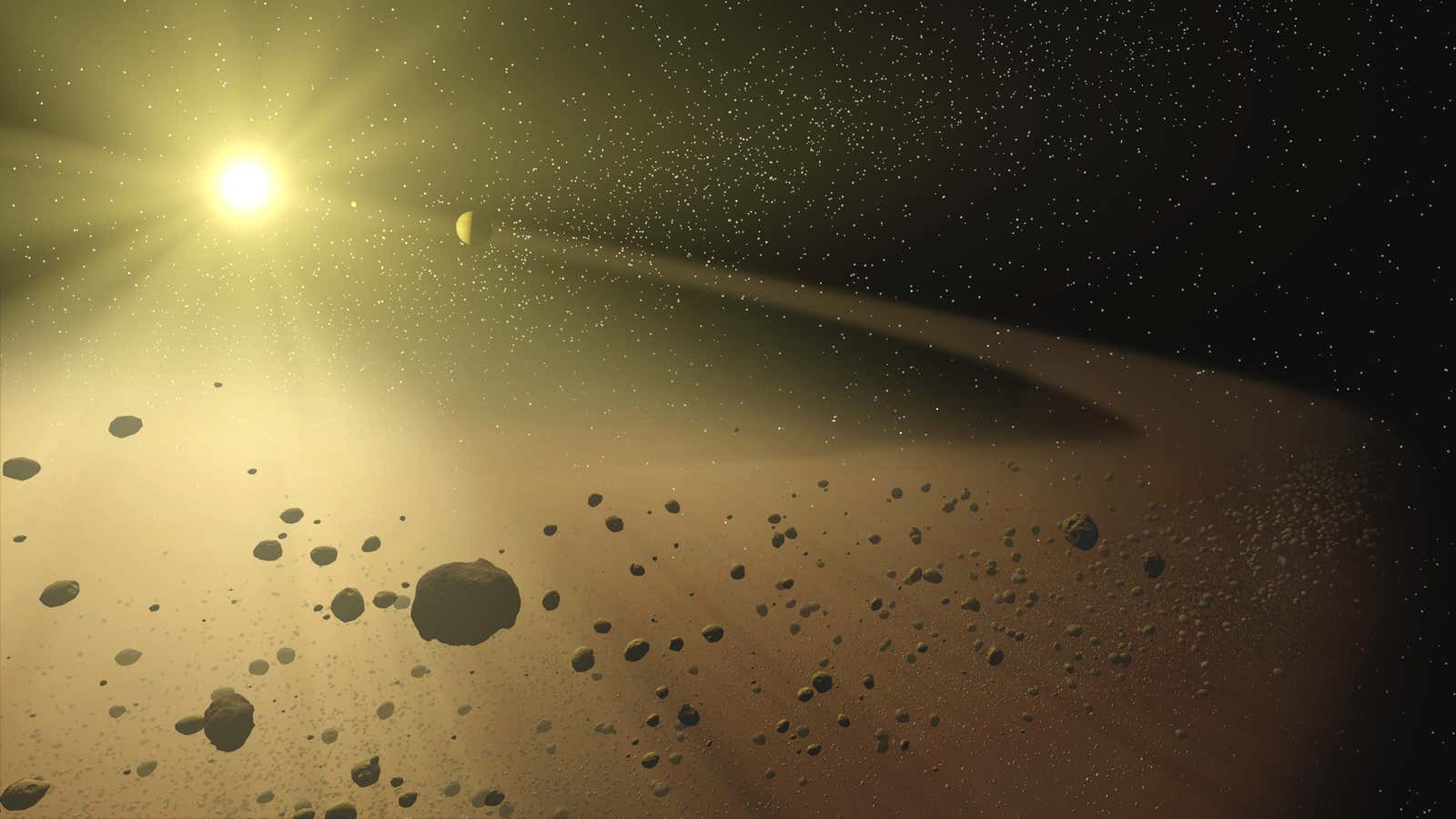There isn’t a star like KIC 8462852. For the past 18 months, ever since a group of astronomers introduced the world to its strange, seemingly unnatural fluctuations in brightness, scientists have been obsessed with it.
What’s kept the interest so high is a hypothesis that the fluctuations happen because the star is surrounded by some alien megastructure. Unlike most alien hypotheses, it has so far stood up to challenges because no known natural phenomenon could better explain what astronomers are seeing.
That might be about to change. A study to be published on Monday (Jan. 16) in the Monthly Notices of the Royal Astronomical Society suggests that, if KIC 8462852 were to gobble up one or more of its own planets, that could create the patterns of light that put scientists on the case.
What are these patterns? Between 1890 and 1989, the mystery star lost about 14% of its brightness. In cosmological terms, that’s far too quick for any known natural dimming. Stranger still, over the few years before 2011, the Kepler space telescope caught the light from the star dipping for periods of just a few days, some times by as much as 22%.
The “alien megastructure” hypothesis, as Quartz explained previously, is this:
In the 1960s, renowned physicist Freeman Dyson argued that the energy demands of any intelligent race would, within a few millennia using advanced technology, outstrip whatever supply were available on the planet. In that case, the most effective way to start capturing more energy would be to build a solar-panel contraption to capture the star’s light. Such a structure would start small, but in theory eventually cover the whole star, in what is now called a “Dyson sphere.”
The suggestion, then, was that Kepler might have started observing KIC 8462852 while aliens were building a Dyson sphere around it. Hence the gradually declining brightness, as more of the star was surrounded by the sphere, and intermittent darkening as construction activity went on.
Brian Metzger of Columbia University and his colleagues have instead put up the planet-gobbling theory. Planets don’t usually fall into their stars, but one could if, say, a large body like a comet knocked the planet out of its orbit and sent it to its doom. They reason that when a star swallows something as large as a planet, for a cosmologically short period, between 200 years and 10,000 years, its brightness increases as it burns away the planet’s matter. Then it would decline again. So if we happen to have started watching the star towards the end of such a period, it might explain the 14% fall in brightness over 100 years.
Also, an eaten-up planet could leave behind large debris, such as its moon or large pieces of the planet that for some reason weren’t sucked in. These large bodies could be passing in front of the star in orbit, blocking some of its light and causing the brief dips seen by the Kepler space telescope.
As with all the other explanations about KIC 8462852, this is still just a hypothesis. However, if KIC 8462852 is indeed gobbling up planets, some other stars must do it too. Finding another one would be one way to throw away the alien-megastructure hypothesis. (Unless, of course, the other star also just happens to have a Dyson sphere being built around it.)
Jason Wright of Pennsylvania State University at University Park, who suggested the alien-megastructure hypothesis, believes that the planet-gobbling explanation from Metzger and his colleagues is a strong one. “This paper puts a merger scenario on the table in a credible way,” he told the New Scientist. “I think this moves it into the top tier of explanations.”
